Scottish Fold Ear Health: Caring for Both Folded and Standard Ear Varieties
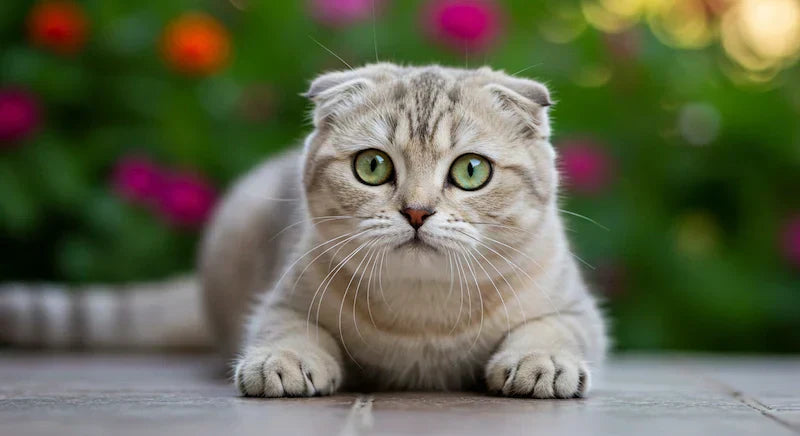
The adorable feline breed with folded ears has won the hearts of cat enthusiasts worldwide with its distinctive appearance and sweet temperament. Their most recognizable feature is the unique folded appearance that gives them an endearing, owl-like expression. However, not all Scottish Folds display this iconic trait—many cats have the standard upright shape. Whether your beloved companion has folded ears or Scottish Fold with straight ears, understanding their specific health needs is crucial for ensuring overall well-being and comfort.
This comprehensive guide focuses on maintaining optimal health for both varieties, providing practical advice on cleaning methods, preventative care, and recognizing potential issues before they become serious concerns. By understanding the distinct needs of each type, you can help your furry friend live a comfortable, healthy life free from discomfort.
Understanding the Two Types of Varieties
The characteristic folded appearance results from a natural genetic mutation that affects the cartilage throughout the body, most visibly in the upper portion of the head. This mutation causes the cartilage to fold forward, creating the breed's signature look. However, this unique trait comes with specific health considerations that owners should be aware of.
The folded structure creates additional crevices and enclosed spaces where moisture, debris, and wax can accumulate. Due to the limited airflow within these folds, these felines may be more susceptible to infections and wax buildup than their standard counterparts. The folded cartilage can sometimes restrict proper drainage, potentially creating an environment where bacteria and yeast thrive.
Additionally, it's worth noting that responsible breeding practices dictate that cats with folded cartilage should only be bred with Scottish Fold straight-eared companions to prevent serious skeletal issues. This breeding approach explains why many cats in this breed actually have the straight variety.
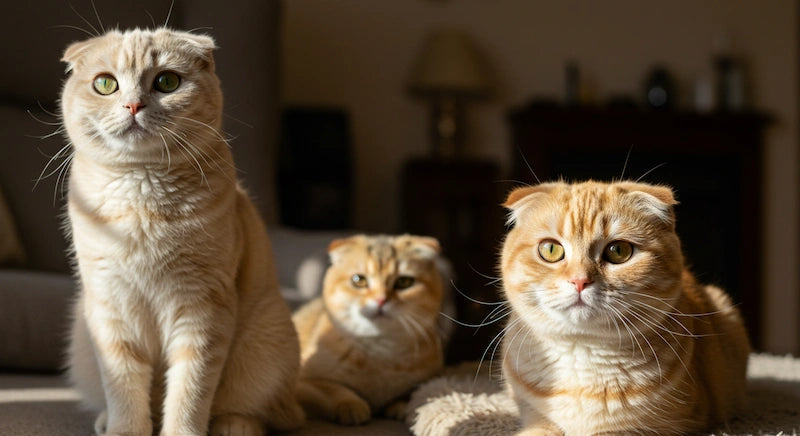
Standard Variety: The Non-Folded Option
Many people are surprised to learn that a Scottish Fold cat with straight ears is still a purebred member of the breed. These felines possess all the lovable personality traits but lack the dominant gene that causes the cartilage to fold. The straight-eared variety has traditional upright, pointed features similar to those of other breeds.
While cats with straight ears generally experience fewer specific health issues than their folded siblings, they still require regular maintenance. Their ear canals are more exposed and have better ventilation, reducing the risk of moisture retention and subsequent infection, but they remain susceptible to common feline problems like mites, infections, and wax buildup.
Understanding whether your companion has the folded or Scottish Fold straight ears variety will help you provide the most appropriate care for their specific needs, though both types benefit from regular monitoring and cleaning.
Common Health Issues
Infections: A Bigger Concern for Folded Varieties
Infections represent one of the most significant health concerns for this breed, particularly those with the folded variety. The enclosed environment created by the fold can trap moisture and provide an ideal breeding ground for bacteria and yeast. Signs of infection include:
-
Frequent scratching or pawing at the ear area
-
Head shaking or tilting
-
Redness or swelling of the canal
-
Unusual odor
-
Discharge that may be yellow, brown, or black
-
Behavioral changes like irritability or depression due to discomfort
The folded variety may require more frequent monitoring for these symptoms compared to the standard type. However, all members of this breed should be regularly checked for signs of infection, as early detection significantly improves treatment outcomes.
Wax Buildup: Causes and Prevention
All felines naturally produce earwax as a protective mechanism, but this breed, especially those with folds, may experience more noticeable buildup due to reduced airflow and drainage. Excessive wax can create an environment where infections flourish and may even lead to hearing impairment if left unaddressed.
Several factors can contribute to increased wax production in these cats:
-
Genetics and breed predisposition
-
Environmental allergens
-
Diet and hydration levels
-
Underlying health conditions
-
Age (older pets often produce more wax)
-
Humidity and environmental conditions
Regular cleaning can help manage wax buildup, but it's important to use the correct techniques and products designed specifically for feline care. Over-cleaning can also be problematic, potentially irritating the delicate canal and disrupting the natural protection that appropriate levels of wax provide.
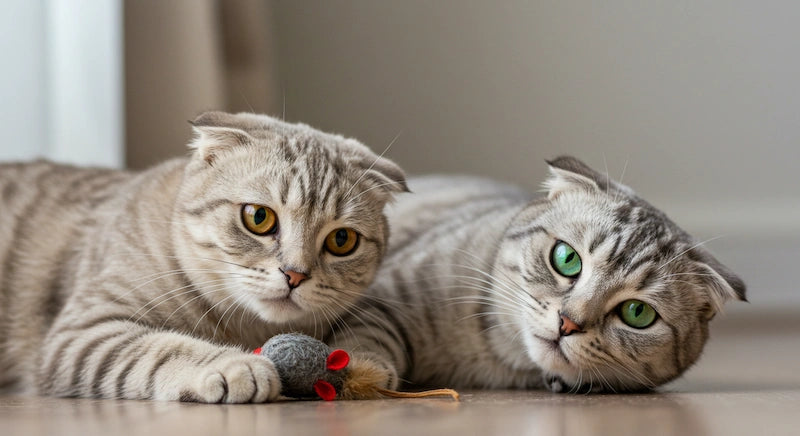
Mites and Other Infections
Mites are microscopic parasites that can infest your pet's sensitive ear areas, causing intense itching and discomfort. These tiny creatures feed on skin oils and wax, leading to inflammation and increased wax production. While mites can affect any feline, the additional folds and crevices in the folded variety may make detection and treatment more challenging.
Other infections, including bacterial and fungal varieties, can also affect this breed. These conditions often result from an imbalance in the natural environment, which can be triggered by excessive moisture, allergies, or underlying health issues.
Signs of mites or other infections may include:
-
Excessive scratching
-
Dark, coffee-ground-like discharge
-
Strong odor
-
Inflammation
-
Hair loss around the affected ear area due to excessive scratching
Treating these conditions promptly is essential to prevent chronic problems and potential damage to the ear canal or eardrum.
How to Clean and Maintain Health
How to Clean Scottish Fold Ears (Both Varieties)
Proper cleaning techniques are crucial when caring for your pet, regardless of which variety they have. Here's a step-by-step guide to safely clean this sensitive area:
Step 1: Gather the right tools. Select a veterinarian-approved cleaning solution—never use alcohol, hydrogen peroxide, or human cleaners, as these can irritate sensitive tissues. You'll also need cotton balls or soft gauze pads, and treats to reward your companion after the cleaning session.
Step 2: Position your pet comfortably. Choose a quiet, calm environment and gently restrain your feline. Many owners find it helpful to wrap their pet in a towel, leaving only the head exposed, creating a "purrito" that prevents scratching while keeping them secure.
Step 3: Examine before cleaning. Before applying any solution, visually inspect for signs of infection, parasites, or excessive redness. If you notice any concerning symptoms, consult your veterinarian before proceeding with cleaning.
Step 4: Apply the cleaning solution. For both varieties, gently lift the ear flap and apply a few drops of the cleaning solution into the canal. For the folded variety, take special care to ensure the solution reaches beneath the fold. Never insert the applicator deep into the canal.
Step 5: Massage the base. Gently massage the base for about 30 seconds to help loosen debris and wax. You may hear a squishing sound—this is normal and indicates that the solution is breaking down the wax.
Step 6: Allow your pet to shake. Step back and allow your companion to shake their head, which helps bring loosened debris to the outer area where you can easily remove it.
Step 7: Wipe away debris. Using a cotton ball or gauze pad, gently wipe the visible parts of the canal and flap. For the folded variety, pay special attention to cleaning within the folds, but never probe deeply into the canal. For the Scottish Fold with straight ears, focus on the visible portions of the canal opening.
Step 8: Reward your pet. Offer treats and praise to create a positive association with cleaning, making future sessions less stressful.
Frequency of Cleaning
The appropriate frequency for cleaning depends on several factors, including ear type and individual tendencies toward wax production or infection.
For most companions with the standard variety, cleaning once every 2-4 weeks is typically sufficient. However, those with folds may benefit from more frequent cleaning—generally every 1-2 weeks—due to their predisposition to wax buildup and limited airflow.
Several factors may necessitate adjusting this schedule:
-
If your pet spends significant time outdoors, more frequent cleaning may be necessary to remove environmental debris.
-
Those with a history of infections might require weekly cleanings as a preventative measure.
-
During allergy seasons, some felines experience increased wax production and may need more frequent attention.
-
Older companions often produce more wax and may benefit from more regular cleaning.
Always monitor your pet's response to cleaning. Signs of discomfort or irritation after cleaning may indicate that you're cleaning too frequently or using a solution that doesn't agree with your companion. Conversely, persistent head shaking or scratching might suggest that more frequent cleaning is needed.
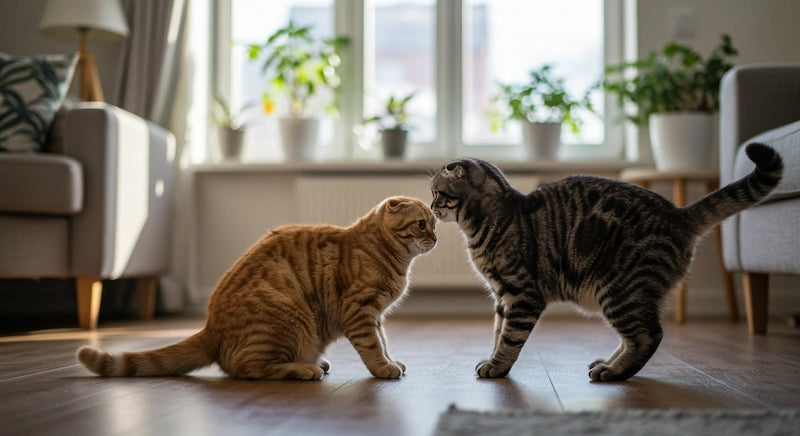
Veterinary Care and Monitoring for Health
Regular veterinary check-ups play a crucial role in maintaining optimal ear health for your cat. Professional examinations can detect early signs of problems that might not be visible to pet owners, preventing minor issues from developing into serious conditions.
Your veterinarian has specialized tools to examine deep within the ear canal and can identify conditions like mites, infections, or polyps that might be missed during home assessments. These routine check-ups are particularly important for those with folds, as their unique structure makes them more vulnerable to hidden problems.
If problems are detected, your veterinarian might recommend:
-
Prescription medications for infections or inflammation
-
Antiparasitic treatments for mites
-
Professional deep cleaning for severe wax buildup
-
Diagnostic tests to identify the underlying causes of recurring issues
Between veterinary visits, monitor your companion for signs that might indicate problems. Contact your veterinarian promptly if you notice:
-
Persistent head shaking or scratching
-
Unusual odor
-
Visible discharge or excessive wax
-
Apparent pain when touched
-
Changes in hearing ability
-
Swelling or redness
Early intervention is key to preventing chronic conditions that could potentially impact your pet's quality of life and hearing.
Maintaining Overall Health for Your Cat
The Role of Grooming in Health
Regular grooming sessions provide an excellent opportunity to check your pet's ears and prevent problems before they develop. Brushing your companion's coat helps remove loose fur, dirt, and dander that might otherwise find their way into sensitive ear areas. This is particularly beneficial during shedding seasons when hair accumulation can be significant.
For those with folded ears, gentle grooming around this area helps prevent debris from becoming trapped in the folds. Use a soft brush or comb, and always be gentle when grooming near sensitive regions to avoid causing discomfort or injury.
Nutrition and Health
A balanced diet plays a surprising role in maintaining healthy ear tissues for your pet. Proper nutrition supports the immune system, helping your companion fight off potential infections before they take hold. Additionally, specific nutrients can directly benefit ear health:
-
Omega-3 fatty acids help reduce inflammation and support skin health, potentially decreasing irritation
-
Antioxidants support immune function and help combat inflammation
-
Adequate hydration helps maintain proper wax consistency
Some cats may have food sensitivities or allergies that manifest as ear inflammation or excessive wax production. If you suspect this might be affecting your pet, consult with your veterinarian about potential dietary adjustments or allergy testing.
Creating a Healthy Environment
Your home environment can significantly impact your pet's ear health. Consider these environmental factors to reduce the risk of problems:
-
Maintain moderate humidity levels—excessive humidity can create a breeding ground for bacteria and yeast in sensitive ear areas
-
Regularly clean your home to reduce dust, pollen, and other allergens that might cause irritation
-
Avoid using harsh chemicals or strong fragrances that could trigger allergic reactions
-
Provide clean bedding and sleeping areas to minimize exposure to dust mites and other microscopic irritants
For multi-pet households, regular parasite prevention is essential, as ear mites can easily spread between animals.
Conclusion: Prioritizing Your Cat's Ear Health
Whether your beloved companion has the characteristic folded ears or is a Scottish Fold cat with straight ears, proper ear care is an essential component of their overall health maintenance. Understanding the specific needs of your pet allows you to provide targeted care that prevents problems before they develop. The folded variety typically requires more frequent monitoring and cleaning due to its unique structure, while those with straight ears still need regular care, though perhaps less frequently.
Early detection of problems remains crucial for both varieties—familiarize yourself with the signs of infections and other issues to catch them quickly. Regular veterinary check-ups complement your home care routine, and proper nutrition combined with mindful environmental management further support overall ear health.
By incorporating regular ear checks and appropriate cleaning into your pet's care routine, you're not just preventing potential problems—you're strengthening the bond between you and your feline companion. A gentle examination provides an opportunity for positive interaction while ensuring your pet remains comfortable and pain-free. The time you invest in this aspect of care pays dividends in your pet's quality of life and longevity.
Is your cat's ear health a top priority? Keep them clean and healthy with the right care, and consult your vet regularly to ensure they're in top shape!
























































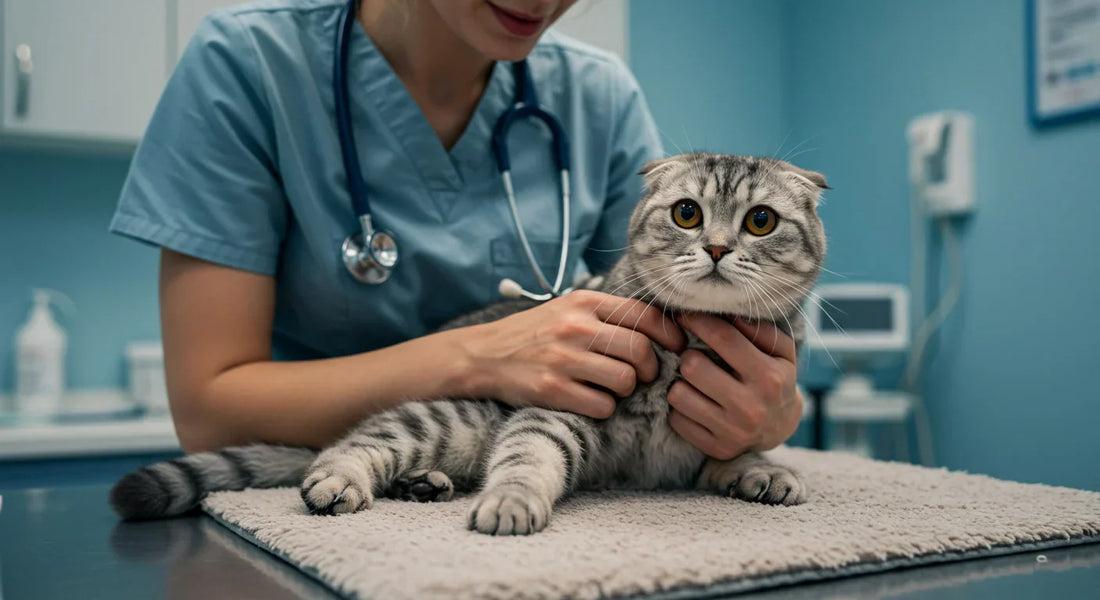




Comments(0)